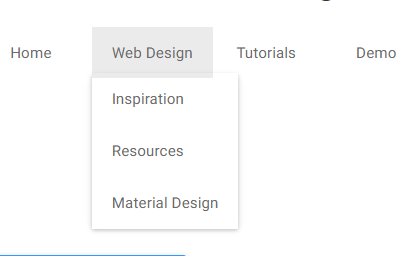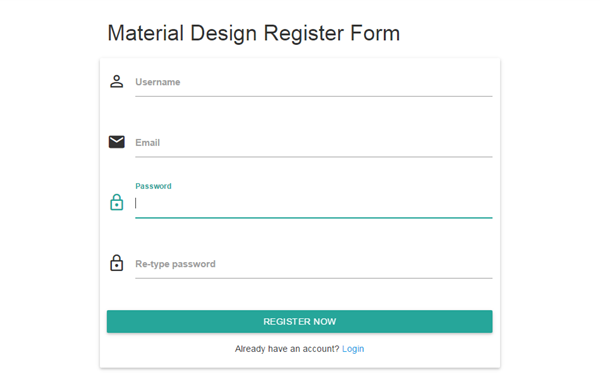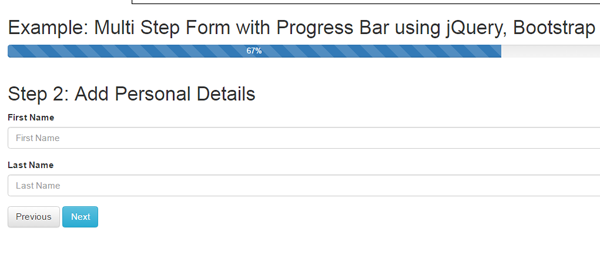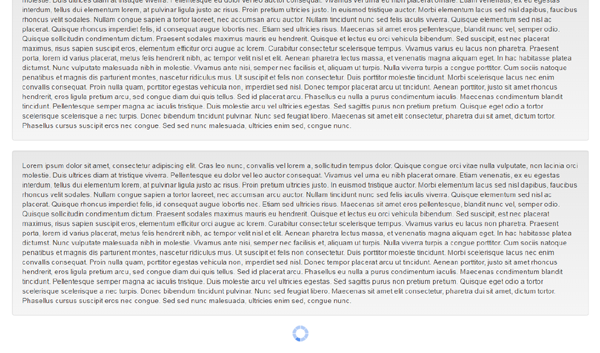The User Registration and Login is an important feature of any web projects. In which user’s are allowed to register themselves to manage their account and provided roles to allow access to particular section.
So if your’re looking for user registration and login solution then you’re here at right place. In this tutorial you will learn how to develop user login and registration system with PHP and MySQL to use in any web project.
You can also enhance user login functionality with features like user login with OTP and user login with remember me password feature and
user password reset functionality. You can also create complete user management system with PHP & MySQL to manage user functionality with admin panel.
We will cover this tutorial in easy steps with live demo to handle complete user registration and login functionality with server side validation. You can also download the complete register and login script created with PHP and MySQL.
Also, read:
Let’s start implementing the user login and registration functionality with PHP and MySQL. Before you begin, take a look on files structure. We need following files for this tutorial.
- db_connect.php
- index.php
- login.php
- register.php
- logout.php
1. Create Database Table
In this tutorial we will need a database table to store user details. So we will create table users to store user information.
CREATE TABLE IF NOT EXISTS `users` (
`uid` int(11) NOT NULL AUTO_INCREMENT,
`user` varchar(255) DEFAULT NULL,
`pass` varchar(100) DEFAULT NULL,
`email` varchar(255) DEFAULT NULL,
`profile_photo` varchar(200) DEFAULT NULL,
PRIMARY KEY (`uid`),
UNIQUE KEY `username` (`user`),
UNIQUE KEY `email` (`email`)
) ENGINE=InnoDB DEFAULT CHARSET=latin1 AUTO_INCREMENT=1 ;
2. Create Database Connection
We will create a PHP file db_connect.php to make connection with MySQL database.
<?php
/* Database connection start */
$servername = "localhost";
$username = "root";
$password = "";
$dbname = "demos";
$conn = mysqli_connect($servername, $username, $password, $dbname);
if (mysqli_connect_errno()) {
printf("Connect failed: %s\n", mysqli_connect_error());
exit();
}
?>
3. Create Main HTML for Login/Register
First we will create main file index.php to display Login/Register link. We will also display logged in user details on this page instead of Login/Register link when user successfully logged in.
<div class="container">
<h2>Example: Login and Registration Script with PHP, MySQL</h2>
<div class="collapse navbar-collapse" >
<ul class="nav navbar-nav navbar-left">
<?php if (isset($_SESSION['user_id'])) { ?>
<li><p class="navbar-text"><strong>Welcome!</strong> You're signed in as <strong><?php echo $_SESSION['user_name']; ?></strong></p></li>
<li><a href="logout.php">Log Out</a></li>
<?php } else { ?>
<li><a href="login.php">Login</a></li>
<li><a href="register.php">Sign Up</a></li>
<?php } ?>
</ul>
</div>
</div>
4. Create User Register Form HTML
Now we will create register.php file and create register Form HTML.
<div class="container">
<h2>Example: Login and Registration Script with PHP, MySQL</h2>
<div class="row">
<div class="col-md-4 col-md-offset-4 well">
<form role="form" action="<?php echo $_SERVER['PHP_SELF']; ?>" method="post" name="signupform">
<fieldset>
<legend>Sign Up</legend>
<div class="form-group">
<label for="name">Name</label>
<input type="text" name="name" placeholder="Enter Full Name" required value="<?php if($error) echo $name; ?>" class="form-control" />
<span class="text-danger"><?php if (isset($uname_error)) echo $uname_error; ?></span>
</div>
<div class="form-group">
<label for="name">Email</label>
<input type="text" name="email" placeholder="Email" required value="<?php if($error) echo $email; ?>" class="form-control" />
<span class="text-danger"><?php if (isset($email_error)) echo $email_error; ?></span>
</div>
<div class="form-group">
<label for="name">Password</label>
<input type="password" name="password" placeholder="Password" required class="form-control" />
<span class="text-danger"><?php if (isset($password_error)) echo $password_error; ?></span>
</div>
<div class="form-group">
<label for="name">Confirm Password</label>
<input type="password" name="cpassword" placeholder="Confirm Password" required class="form-control" />
<span class="text-danger"><?php if (isset($cpassword_error)) echo $cpassword_error; ?></span>
</div>
<div class="form-group">
<input type="submit" name="signup" value="Sign Up" class="btn btn-primary" />
</div>
</fieldset>
</form>
<span class="text-success"><?php if (isset($success_message)) { echo $success_message; } ?></span>
<span class="text-danger"><?php if (isset($error_message)) { echo $error_message; } ?></span>
</div>
</div>
<div class="row">
<div class="col-md-4 col-md-offset-4 text-center">
Already Registered? <a href="login.php">Login Here</a>
</div>
</div>
</div>
5. User Register Functionality with Form Validation
Now in same register.php file, we will handle user registration functionality by validating form input values like user name, email password and user store details in MySQL database table users
<?php
include_once("db_connect.php");
session_start();
if(isset($_SESSION['user_id'])) {
header("Location: index.php");
}
$error = false;
if (isset($_POST['signup'])) {
$name = mysqli_real_escape_string($conn, $_POST['name']);
$email = mysqli_real_escape_string($conn, $_POST['email']);
$password = mysqli_real_escape_string($conn, $_POST['password']);
$cpassword = mysqli_real_escape_string($conn, $_POST['cpassword']);
if (!preg_match("/^[a-zA-Z ]+$/",$name)) {
$error = true;
$uname_error = "Name must contain only alphabets and space";
}
if(!filter_var($email,FILTER_VALIDATE_EMAIL)) {
$error = true;
$email_error = "Please Enter Valid Email ID";
}
if(strlen($password) < 6) {
$error = true;
$password_error = "Password must be minimum of 6 characters";
}
if($password != $cpassword) {
$error = true;
$cpassword_error = "Password and Confirm Password doesn't match";
}
if (!$error) {
if(mysqli_query($conn, "INSERT INTO users(user, email, pass) VALUES('" . $name . "', '" . $email . "', '" . md5($password) . "')")) {
$success_message = "Successfully Registered! <a href='login.php'>Click here to Login</a>";
} else {
$error_message = "Error in registering...Please try again later!";
}
}
}
?>
6. Create User Login Form HTML
Now we will create login.php file and create user login Form HTML.
<div class="container">
<h2>Example: Login and Registration Script with PHP, MySQL</h2>
<div class="row">
<div class="col-md-4 col-md-offset-4 well">
<form role="form" action="<?php echo $_SERVER['PHP_SELF']; ?>" method="post" name="loginform">
<fieldset>
<legend>Login</legend>
<div class="form-group">
<label for="name">Email</label>
<input type="text" name="email" placeholder="Your Email" required class="form-control" />
</div>
<div class="form-group">
<label for="name">Password</label>
<input type="password" name="password" placeholder="Your Password" required class="form-control" />
</div>
<div class="form-group">
<input type="submit" name="login" value="Login" class="btn btn-primary" />
</div>
</fieldset>
</form>
<span class="text-danger"><?php if (isset($error_message)) { echo $error_message; } ?></span>
</div>
</div>
<div class="row">
<div class="col-md-4 col-md-offset-4 text-center">
New User? <a href="register.php">Sign Up Here</a>
</div>
</div>
</div>
7. User Login Functionality with Form Validation
Now in same login.php file, we will handle user login functionality with from validation and get user details from MySQL database table users. If user login successful, then stored user id and user name in SESSION variables to check for user login status and redirected to index.php to display user as logged in with user details and Logout link.
<?php
session_start();
include_once("db_connect.php");
if(isset($_SESSION['user_id'])!="") {
header("Location: index.php");
}
if (isset($_POST['login'])) {
$email = mysqli_real_escape_string($conn, $_POST['email']);
$password = mysqli_real_escape_string($conn, $_POST['password']);
$result = mysqli_query($conn, "SELECT * FROM users WHERE email = '" . $email. "' and pass = '" . md5($password). "'");
if ($row = mysqli_fetch_array($result)) {
$_SESSION['user_id'] = $row['uid'];
$_SESSION['user_name'] = $row['user'];
header("Location: index.php");
} else {
$error_message = "Incorrect Email or Password!!!";
}
}
?>
8. User Logout Functionality
Now finally in logout.php, we will handle user logout functionality by unset SESSION variables to make user logout.
<?php
ob_start();
session_start();
if(isset($_SESSION['user_id'])) {
session_destroy();
unset($_SESSION['user_id']);
unset($_SESSION['user_name']);
header("Location: index.php");
} else {
header("Location: index.php");
}
?>
You may also like:
You can view the live demo from the Demo link and can download the script from the Download link below.
Demo Download



